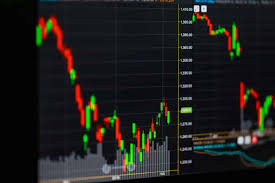- 31/10/2025
- trading6
Understanding Forex Trading A Comprehensive Guide 1491898157

Forex trading, also known as foreign exchange trading, is the process of buying and selling currencies in the global marketplace. It is one of the largest financial markets in the world, with a daily trading volume exceeding $6 trillion. This guide aims to explain the fundamentals of Forex trading, covering key concepts, strategies, and tips to help both new and experienced traders navigate this dynamic market. For more tailored insights, consider checking out forex trading explained FX Trading UZ.
What is Forex Trading?
Forex trading involves the exchange of one currency for another at an agreed-upon exchange rate. Currencies are traded in pairs (e.g., EUR/USD), and the value of a currency pair fluctuates based on various factors including economic indicators, geopolitical events, and market sentiment. The primary objective of Forex trading is to profit from these fluctuations in currency values.
Understanding Currency Pairs
In Forex trading, currencies are always quoted in pairs. The first currency in the pair is called the base currency, while the second is the quote currency. For instance, in the pair EUR/USD, the euro (EUR) is the base currency, and the US dollar (USD) is the quote currency. If the pair is quoted at 1.20, it means that 1 euro can be exchanged for 1.20 US dollars.
Types of Currency Pairs
- Major Pairs: These include the most traded currencies, like EUR/USD, GBP/USD, and USD/JPY.
- Minor Pairs: These are currency pairs that do not involve the US dollar, such as EUR/GBP and AUD/NZD.
- Exotic Pairs: These involve a major currency paired with a currency from a developing economy, like USD/TRY (Turkish Lira) or EUR/SEK (Swedish Krona).
How Forex Trading Works
Forex trading is conducted over-the-counter (OTC) through a network of banks and financial institutions, rather than a centralized exchange. Traders can access the Forex market through brokers, which act as intermediaries by facilitating trades between buyers and sellers.
Leverage and Margin in Forex Trading
Leverage is a powerful tool in Forex trading that allows traders to control a larger position with a smaller amount of capital. For example, with a leverage of 100:1, a trader can control a $100,000 position with only $1,000 in their trading account. However, leverage comes with significant risk, as it can amplify both gains and losses.
Margin Requirement
Margin is the amount of money required to open and maintain a leveraged position. It is typically expressed as a percentage of the full position size. Understanding margin requirements is crucial for risk management in trading.
Forex Trading Strategies
Developing a robust trading strategy is essential for success in Forex trading. Here are a few popular strategies used by traders:
1. Day Trading
Day trading involves making multiple trades within a single day to capitalize on short-term market movements. Day traders typically close all positions by the end of the trading day to avoid overnight risks.
2. Swing Trading
Swing trading focuses on capturing short to medium-term price movements over a few days to weeks. Traders analyze price action trends and patterns, aiming to enter and exit trades at optimal points.

3. Scalping
Scalping is a high-frequency trading strategy that involves making small profits from numerous trades throughout the day. Scalpers often hold positions for just a few seconds to minutes, requiring quick decision-making and execution.
Analyzing the Market
To make informed trading decisions, traders analyze the Forex market using two primary methods: fundamental analysis and technical analysis.
Fundamental Analysis
Fundamental analysis examines economic indicators, news events, and geopolitical factors that can influence currency values. Key indicators include interest rates, inflation rates, employment reports, and GDP growth. Traders who use fundamental analysis stay updated on economic news releases and central bank announcements.
Technical Analysis
Technical analysis involves analyzing historical price charts and patterns to predict future price movements. Traders use various tools, such as moving averages, support and resistance levels, and technical indicators (e.g., RSI, MACD) to identify potential entry and exit points.
Risk Management in Forex Trading
Effective risk management is vital to long-term success in Forex trading. Here are some key risk management techniques:
1. Setting Stop Loss and Take Profit Levels
Stop loss orders help limit potential losses by automatically closing a position when it reaches a specified price level. Take profit orders lock in profits by closing a position once it reaches the desired profit target.
2. Position Sizing
Position sizing refers to determining how much capital to risk on each trade relative to the total trading account. Many traders use a rule of thumb to risk only a small percentage (typically 1-3%) of their capital on any single trade.
Choosing a Forex Broker
Selecting the right Forex broker is crucial for a successful trading experience. Key factors to consider when choosing a broker include:
- Regulation: Choose a broker that is regulated by a reputable financial authority to ensure the safety of your funds.
- Trading Platforms: Evaluate the trading platforms offered by brokers. Look for user-friendly interfaces, advanced charting tools, and compatibility with various devices.
- Spreads and Fees: Compare the spreads and fees charged by different brokers, as these can impact overall profitability.
- Customer Support: Reliable customer support is essential. Ensure the broker offers multiple channels for assistance, such as live chat, email, and phone support.
Conclusion
Forex trading can be a rewarding endeavor for those willing to invest time and effort into understanding the market. By grasping key concepts, developing effective strategies, and practicing sound risk management, traders can enhance their chances of success in this exciting and fast-paced environment. Always remember to start with a demo account to practice your skills without risking real money, and continue to educate yourself as you navigate the ever-evolving world of Forex trading.
